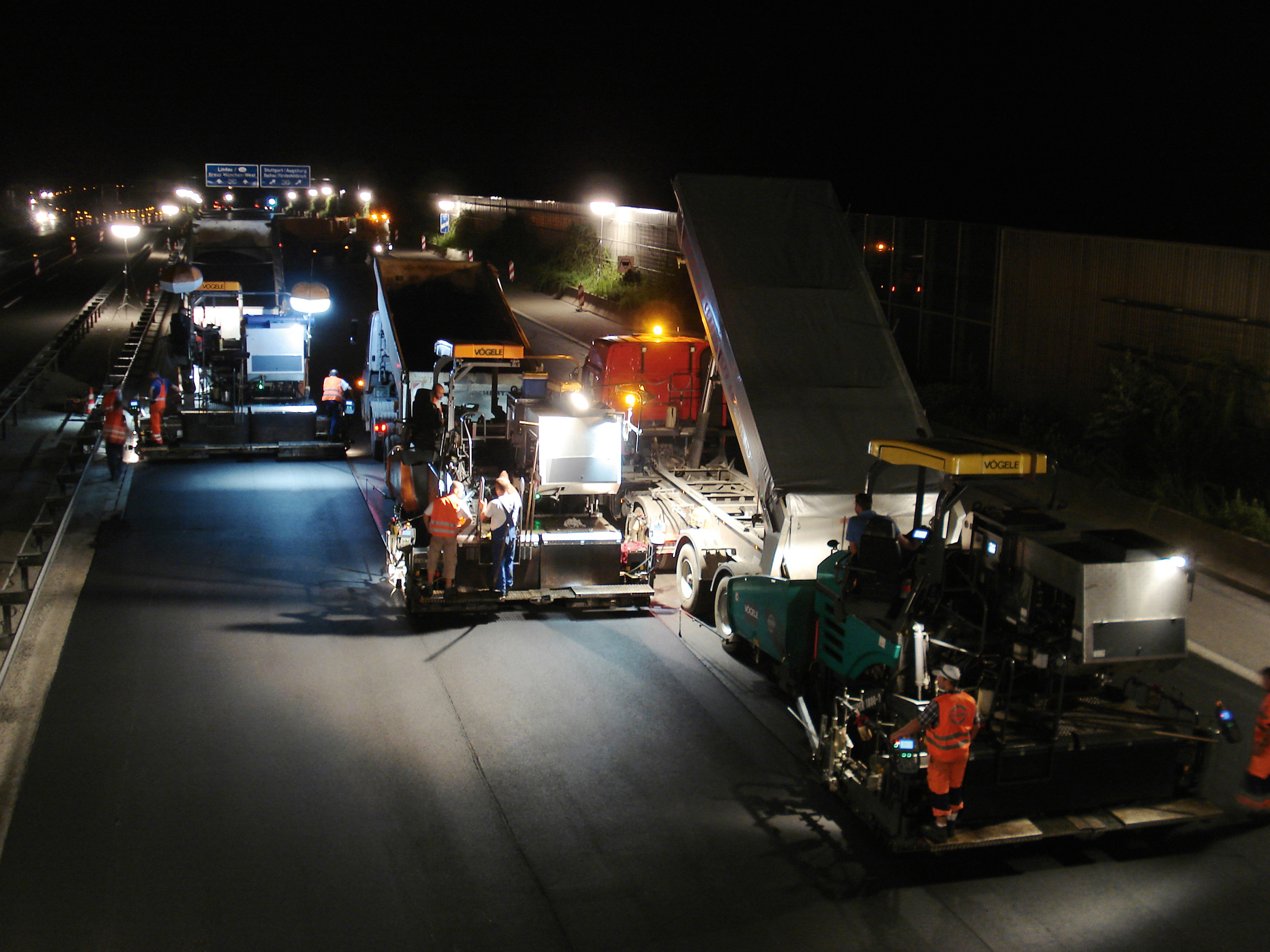
Applying two layers of asphalt in one go not only improves quality, it also speeds up work on site - a critical factor during recent work on the A99 motorway near Munich in Germany
When traffic levels are at a high volume, road reconstruction work can often only be carried out at night leaving just a short time for resurfacing. But time is not the only pressure - these works need to be completed to a high standard in order to cope with the heavy loading.
This was exactly the challenge facing
During the first night Streicher's team used two Wirtgen milling machines to remove the road surface to a depth of 70mm before it was covered by a 55mm binder course on the second night. Light for this night time work was provided by 30 light balloons.
Once these preparations were completed, the new noise-reducing wearing course could be paved in the final night. On this job site, four Voegele Super 1800-2 with SprayJet Module worked in echelon 'hot to hot'. They applied the bitumen emulsion type C67BP5-DSH-V and, at the same time, placed a 15mm wearing course of asphalt type DSH-V 5.
"The road had to be opened to traffic at five o'clock every morning, sufficiently cooled, with road markings applied," explained site manager Tobias Feigl. This was a key factor in the company's selection of the new equipment for the contract. According to Voegele, the SprayJet method is a fast procedure and is further fast tracked by use of the pavers in echelon and applying both layers of material in one operation.
"Inside the tunnel, three pavers worked in echelon, with the fourth joining them after the tunnel," explained Fleigl. "What's more, there was a slight crown had to be paved at the bifurcation of the two carriageways." But according to Fleigl, the 'hot on hot' operation across varying pave widths and different grades presented no problems at all for the paving teams and their machines. "The initial nervousness of the teams quickly disappeared. Everyone involved in the job was relaxed and in a good mood, despite working at night," he said.















